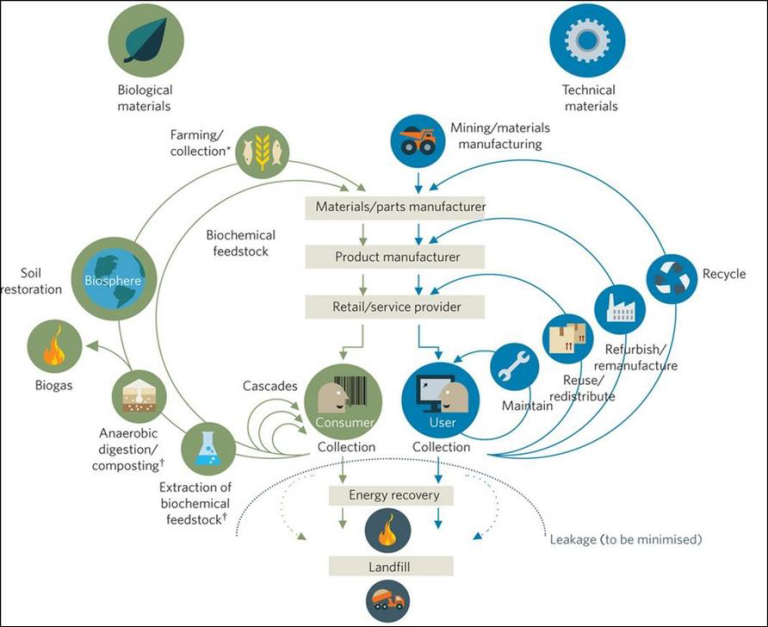Circularity Index
Circularity is a fundamental concept in sustainable development, aiming to reduce waste and increase resource efficiency. As stated by the Ellen MacArthur Foundation, the circular economy, is a “framework for an economy that is restorative and regenerative by design”. Unlike the traditional linear approach, the product is designed in a way that it includes its end-of-life. In circularity, once a product is used to its limit, it is returned to the supply chain rather than being disposed of in a landfill.

According to the annual Circularity Gap Report 2024, the global circularity rate has decreased, highlighting the fact that a sizable fraction of extracted resources are still virgin. The proportion of secondary materials used by the world economy has dropped by 21% in just five years, from 9.1% in 2018 to 7.2% in 2023. And this depicts the necessity of major global reforms to circular economy methods.
LCA and Circularity
The relationship between Life Cycle Assessment (LCA) and circularity is symbiotic, with each reinforcing and enhancing the other. A Circularity Indicator, such as the Material Circularity Indicator (MCI), measures the restorative nature of material flows within a product, and provides insights into its circularity. It evaluates the extent to which linear flows have been minimized and restorative flows maximized, indicating how effectively a product contributes to a circular economy.
While circularity indicators can provide a partial view of a system’s environmental performance, they are not sufficient on their own for decision-making in circular economy projects (Rigamonti, 2021). LCA can support the circular economy by evaluating the benefits of circular actions, managing waste and resources, and considering the quality of resources (Haupt, 2017). Integration of LCA and circularity measurement in the assessment of circular economy strategies is a promising approach (Rigamonti, 2021).
LCA, LCC and Circularity in the same frame in

SimaPro made it easy:
SimaPro, a robust life cycle assessment (LCA) software, plays a pivotal role in advancing circularity practices. With its sophisticated features and analytical capabilities, SimaPro enables businesses to assess their environmental impacts throughout the product life cycle and helps in optimizing the processes in order to reduce the impacts.
It not only performs comprehensive LCAs but also calculates the circularity index of products. By quantifying the circularity index, SimaPro aids in assessing the sustainability of products and contributes to the transition towards a more circular and eco-friendly future. This insightful approach enhances the ability of decision-makers to formulate well-informed strategies for resource efficiency, waste reduction, and overall environmental impact mitigation.
SimaPro’s contribution extends beyond basic LCA by offering a holistic view, aligning with the principles of circular economy. The software becomes an invaluable tool for organizations striving to make sustainable choices, enabling them to navigate the complexities of environmental decision-making and contribute to a more sustainable future.
To know more about SimaPro and its available versions:
Reference:
- The circular economy in detail – Ellen MacArthur Foundation https://www.ellenmacarthurfoundation.org/the-circular-economy-in-detail-deep-dive
- The Circularity Gap Report 2024 https://www.circularity-gap.world/2024
- Chang, D., Lee, C.K., & Chen, C. (2014). Review of life cycle assessment towards sustainable product development. Journal of Cleaner Production, 83, 48-60.
- Rigamonti, L., & Mancini, E. (2021). Life cycle assessment and circularity indicators. The International Journal of Life Cycle Assessment, 26, 1937 – 1942.
- Haupt, M., & Zschokke, M. (2017). How can LCA support the circular economy? —63rd discussion forum on life cycle assessment, Zurich, Switzerland, November 30, 2016. The International Journal of Life Cycle Assessment, 22, 832-837.

